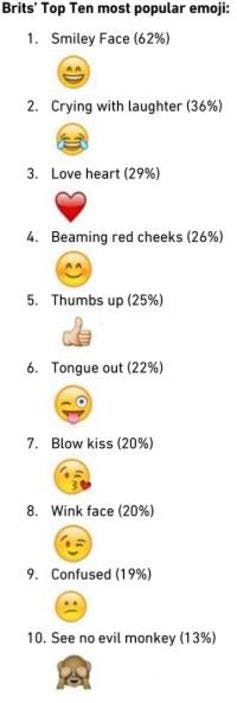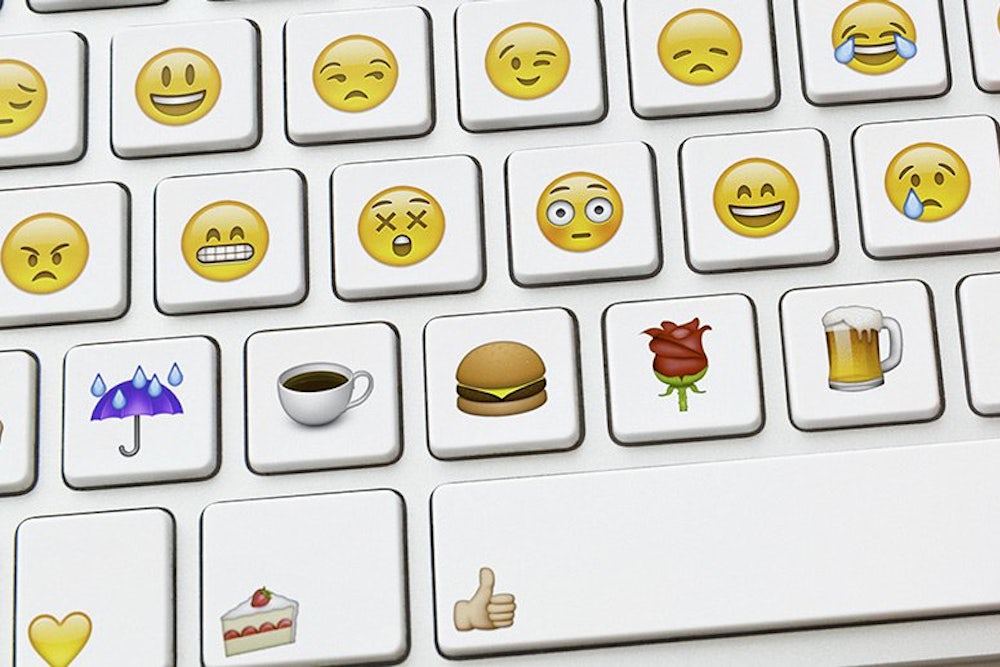The emoji has become one of the fastest growing forms of communication in history. But those who are worried that its growth could see the death of written language are wrong—emojis are being used to enhance, rather than replace words in our digital communications.
An emoji is an iconic, visual representation of an idea, entity, feeling, status or event, that is used alongside or instead of words in digital messaging and social media. You could call them today’s modern hieroglyphics.
Initial results from market research by the company TalkTalk Mobile that used an emoji IQ study that I developed gives us a first glimpse of how the use of emojis are growing. The survey of 2,000 U.K. residents aged 18-65 found that 80 percent of Brits are now using these colorful symbols to communicate on a regular basis. And 62 percent of smartphone users report that their use of emojis has increased from a year ago. The 18 to 25-year-old age group were the biggest users, with 72 percent of younger people agreeing that they find it easier to express their emotions using emojis.

Emoji is an anglicized Japanese word meaning “picture character.” They were invented in the late 1990s in Japan for use in early mobile internet platforms, with 176 emojis released in 1999. But by 2010, the Unicode Consortium—which provides the international standard for digital fonts—had approved 722. This official body oversees which emojis see the light of day, and there are 38 new emojis currently under consideration for release in 2016 (including ones for bacon and champagne glasses clinking). But the rapid growth can be traced to late 2012, when newer generations of smartphones and tablets began incorporating emojis as standard in their digital keyboards.
Is emoji a language?
Irrespective of the medium, what makes something a language boils down to a couple of things. First, there needs to be a wide set of expressions, like words, that can either be pronounced or signed, or represented in some other form, like writing. While English has well over a million words, depending on education and background, an adult English speaker will regularly use somewhere between 30-60,000, and recognize many more. So, even with the 800+ emojis available today, this falls well short of the vocabulary required to express the semantic range of a full-blown language.
The other feature of a language is its grammar: the ability to combine the words and expressions into chunks of larger discourse, enabling the expression of complex ideas ranging from a comment on the weather, to a declaration of undying love.
Sure, emojis can be placed next to one another, providing a very simple form of syntax. And the Australian foreign affairs minister, an avid emoji user, did exactly this in giving Buzzfeed the world’s first political interview entirely in emoji earlier this year.
But what shouldn’t be surprising is that emojis on their own provide an impoverished message: You can’t convey, at least for now, the complexity of international political relations, without recourse to written (or spoken, or signed) language. So, on these measures, emoji is not, strictly speaking a language.
Emojis are mainly used to support and enhance the meaning conveyed by text in a digital message. In spoken language, intonation and gesture provide additional information not always readily gleaned in the spoken message. We rely on intonation to both “punctuate” our spoken utterances, and to provide key cues as to what our words mean and whether we’re asking a question or giving an answer.
In digital communication, emojis fulfils a similar function, enabling the user to add tone and to interpret the meaning of the text. They also provide a visual lingua franca that is independent of a speaker’s native language. The three wise monkey emojis mean the same in English, Italian, or Japanese. Of course, emojis are also fun, and can be used to entertain.
The end game for language?
While talking about this emoji research, I’ve been asked many questions about whether this spells the end for language as we know it. People wonder if emojis will ever completely replace text in digital communication; or whether their rapid uptake is just down to laziness: a colourful symbol is easier to produce than typing words.
The answer, in each case, is no. When we communicate, the message conveyed by the spoken or written word is just one of the elements in what we might think of as a “communicative context.” In spoken communication, researchers now know that if gestures are suppressed, then the speaker becomes less fluent. In digital texting, emojis also convey meanings that both overlap with and add to the written text. Far from replacing language, the visual symbols in fact enhance our ability to converse with one another. They also facilitate more effective communication, a claim which is clearly supported by our study.
It is not lazy to naturally seek more efficient ways to communicate with others. We are creative creatures, and new technology and the new systems of communication it brings can enable quicker, and more efficient communication.
In the future, we can expect emojis to continue their unprecedented rise: My prediction is that they will increasingly begin to invade digital communication in professional contexts too, such as work emails—especially as emoji-enabled keyboards become standard in all forms of computing technology.
![]()
This article was originally published on The Conversation. Read the original article.
